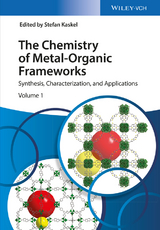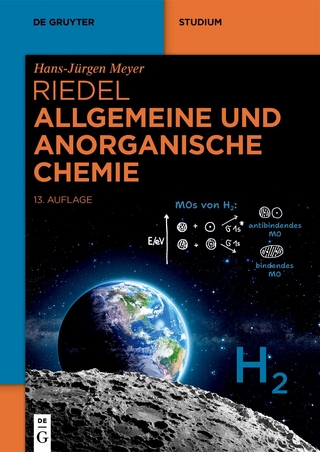The Chemistry of Metal-Organic Frameworks
Providing vital knowledge on the design and synthesis of specific metal-organic framework (MOF) classes as well as their properties, this ready two-volume reference summarizes the state of the art in chemistry.
Divided into four parts, the first begins with a basic introduction to typical cluster units or coordination geometries and provides examples of recent and advanced MOF structures and applications typical for the respective class.
Part II covers recent progress in linker chemistries, while special MOF classes and morphology design are described in Part III.
The fourth part deals with advanced characterization techniques, such as NMR, in situ studies, and modelling. A final unique feature is the inclusion of data sheets of commercially available MOFs in the appendix, enabling experts and newcomers to the field to select the appropriate MOF for a desired application.
A must-have reference for chemists, materials scientists, and engineers in academia and industry working in the field of catalysis, gas and water purification, energy storage, separation, and sensors.
Stefan Kaskel is the Head of the Inorganic Chemistry Department at Technical University Dresden, Germany, and Head of the Business Unit Chemical Surface and Reaction Technology at Fraunhofer Institute for Material and Beam Technology (IWS) in Dresden. He obtained his Ph.D. from the University of Tübingen, Germany, in 1997. He then was a Feodor Lynen Fellow of the Alexander von Humboldt Foundation at Iowa State University, Ames (USA), working with John D. Corbett (1998 to 2000). He did his habilitation with Ferdi Schüth at the MPI für Kohlenforschung in Mülheim a.d. Ruhr (Germany, 2000 - 2003) and was a group leader at this institute from 2002 to 2004. He was appointed full Professor of Inorganic Chemistry at the TU Dresden in June 2004. His research is focused on porous and nanostructured materials. He has coordinated the German MOF program from 2008 to 2014, with 36 German MOF groups involved and is Head of the DECHEMA task group on Metal-Organic Frameworks initiating the European MOF Conference Series (EuroMOF). He has authored more than 250 scientific publications and more than 40 patents.
INTRODUCTION
1) Introduction
2) Network Topology
PART I: MOF CHEMISTRY OF METALLIC CLUSTERS AND OTHER NODES
3) Copper and Zink
4) Manganese, Cobalt, and Nickel
5) Alkaline Earth Metals
6) Aluminium, Gallium and Indium-based MOFs
7) Titanium, Zirconium, and Hafnium
8) Iron, Group 5 and 6 MOFs
9) Platinum Group Metals
10) Group 3 Elements and Lanthanide Metals
PART II: FUNCTIONAL LINKERS
11) Carboxylates - Basics and Advances
12) Extended Linkers for Ultrahigh Surface Area MOFs
13) Imidazolate MOFs and other N-Donor Systems
14) Functional Linkers for Catalysis
15) Chiral Linker Systems
16) Sulfur Containing Linkers
17) Phosphonate Ligands
18) Optical and Electronic Functions in Linkers
19) Photocatalytic Linkers
PART III: SPECIAL MOF CLASSES AND MORPHOLOGY DESIGN OF MOFS
20) Nanoparticles
21) Thin Films
22) Granulation and Shaping
23) From "Soft Porous Framework" to "Ion Conducting PCP/MOF"
PART IV: PROGRESS IN ADVANCED CHARACTERIZATION OF MOFS
24) Advanced Physisorption Methods and MOF Peculiarities
25) Nuclear Magnetic Resonance in MOF Science
26) Electron Paramagnetic Resonance
27) Local IR and Raman Probes
28) In Situ X-ray Diffraction and EXAFS
29) In Situ Crystallization Studies
30) Modelling
31) Defects and Disorder in MOFs
APPENDIX (MOF User Data Sheets)
| Erscheinungsdatum | 03.08.2016 |
|---|---|
| Verlagsort | Weinheim |
| Sprache | englisch |
| Maße | 170 x 244 mm |
| Gewicht | 2215 g |
| Einbandart | gebunden |
| Themenwelt | Naturwissenschaften ► Chemie ► Anorganische Chemie |
| Naturwissenschaften ► Chemie ► Organische Chemie | |
| Naturwissenschaften ► Chemie ► Technische Chemie | |
| Technik ► Maschinenbau | |
| Schlagworte | Anorganische Chemie • Chemie • Chemistry • Inorganic Chemistry • Materials Science • Materialwissenschaften • Metallorganische Chemie • Nanomaterial • Nanomaterialien • nanomaterials • Nanotechnologie • nanotechnology • Organic Chemistry • Organische Chemie • Organometallchemie • Poröse Materialien • Poröse Materialien • Porous Materials • spectroscopy • Spektroskopie |
| ISBN-10 | 3-527-33874-8 / 3527338748 |
| ISBN-13 | 978-3-527-33874-0 / 9783527338740 |
| Zustand | Neuware |
| Informationen gemäß Produktsicherheitsverordnung (GPSR) | |
| Haben Sie eine Frage zum Produkt? |
aus dem Bereich




